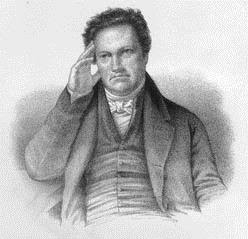The Erie Canal: More than Grade 4 - Schoharie Crossing
In New York State it is often accepted that students are
taught about the Erie Canal in fourth grade and that is sufficient. A few refrains of “Low bridge, everybody
down” will imbed Clinton’s Ditch deeply into the hearts and minds of nine and
ten year olds forever doomed to hum the tune during bored excursions with
family or long walks from the bus stop.
A pity however, as the history of the Erie Canal has so much more to
offer students even beyond elementary education. It is difficult to even know where to begin,
and perhaps that is part of the problem.
Schoharie
Crossing offers terrific programs for fourth grade curriculum, and it meets
many Common Core Standards. More so, it
goes beyond that, and can be used to foster deeper understanding of so many
subjects. The canal helps to explore
topics ranging from economics to engineering, from social programs to
geological history and from politics to biology and scientific principles. Add a splash of good old historic
preservation and a few heavy drops of archeology and Schoharie Crossing maintains
the recipe for being a successful engaging educational resource.
Whether these can be applied to other grade groups is not a
matter of yes, but how. This mostly
falls into the parapet heavily defended by educators and most often attacked by
budgets and funding cuts. It seems
logical that bringing students to a historic site would be invaluable to them
learning history – and at a place like Schoharie Crossing that is over three
hundred years covered by accessible historical interpretation. What is often overlooked is what history truly
is and how that can be applied across standards, shifts and disciplines. An excursion to the site can yield results in
natural sciences, political science, social science, the arts and more, heck
even physical education.
A few ways to illustrate this is by using the sixty-five
thousand dollar word, “inquiry.” Let’s
ask some questions:
Who benefits? Short
answer is we all do. Students and
educators will find great resources available at the site, or just by accessing
heritage sites in general such as museums, parks and historical homes. Well informed educators bring about
well-informed students that produce results on assessments but even more
importantly are well-informed members of civil society.
How do they benefit? By
gaining a better understanding of a myriad of topics and conveying that into
additional curiosity to explore further.
The major focus is educating, and a great portion of that teaching that
it is enjoyable to learn. Coming to
Schoharie Crossing is fun, and by default learning occurs.
What can they learn?
Aside from the above mentioned – a whole lot more. From aspects as varied as the politics,
economics and social reforms of the Early Republic American & NY State
history, to the colonial interactions between the Europeans and Mohawks of the
region, to the geological history of New York and why that allowed for the
patterns of settlement as well as the Erie Canal. Topics can be explored into engineering and
technology of the canal from hand dug to steam power, or businesses and
communities along the canal – how they prospered and/or how they failed. From natural resources and environmental
impact to creative solutions to complicated problems and even how
families lived on and around the canal. Students
can see how everything was interconnected into a larger system and how that
operated – and at times how it didn’t.
What ways are there to learn?
One great way is the primary details of the site. The physical features, the current canal and
the remains of the earlier canal systems as well as the archeological evidence
from 18th century Fort Hunter.
Additionally primary documents can be used, from photographs to letters,
diaries and store ledgers to illustrate daily life, economics, social class
distinctions and quite obviously historical events and people. But it doesn’t stop there. Natural sciences can be illustrated too, as a
visit to the site isn’t complete without witnessing the abundance of nature in
and along the old canal as well as from the banks of the Schoharie Creek and/or
the Mohawk River. From various flora and
fauna to the ways in which they are taking back parts of industrial human
footprints, examples are nearly everywhere.
Why visit? Seems hardly
a question worth answering again, but in the most simple of terms – students
learn.
Students, regardless of grade, can come to the site, read
panels, see artifacts, engage in conversation, ask questions and seek answers.
By making use of the Ticket to Ride grant offered by the
Erie Canalway National Heritage Corridor and the National Park Foundation,
students will be given the ability to make the best of those learning
opportunities and hopefully right here at Schoharie Crossing State Historic
Site.
For more information & details on how to access this
grant, please visit: The
Erie Canalway National Heritage Corridor
To contact Schoharie Crossing State Historic
Site –PO Box 140 –
129 Schoharie St., Ft. Hunter, NY 12069 – (518)
829-7516






Comments
Post a Comment